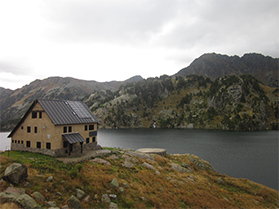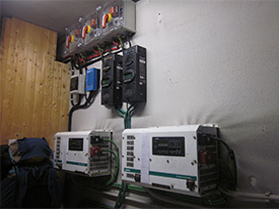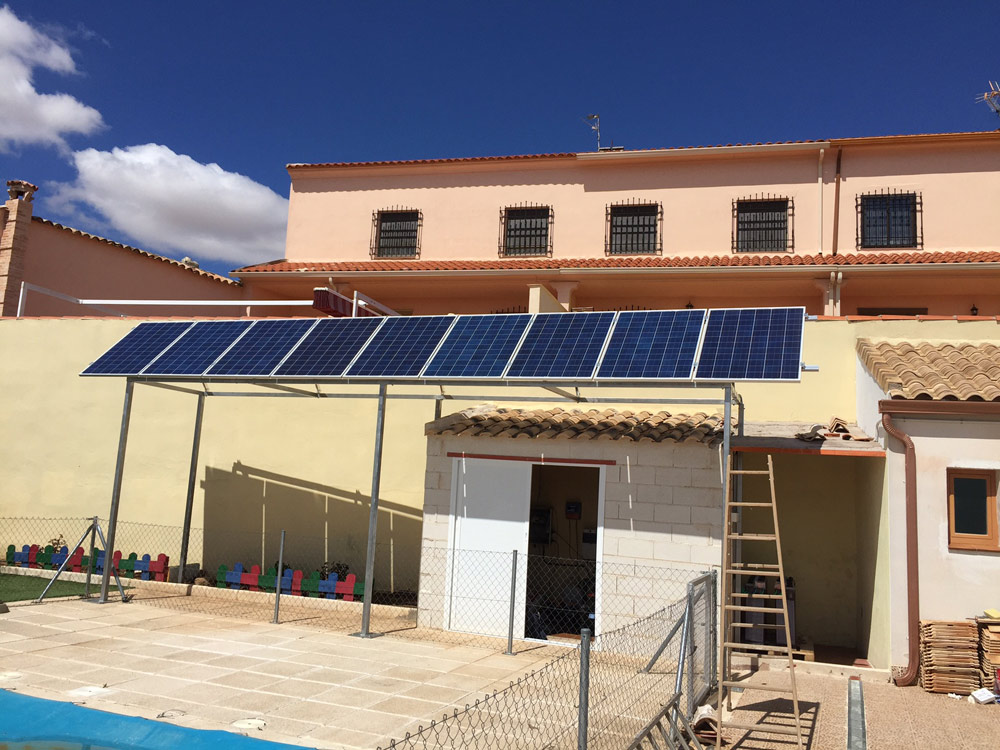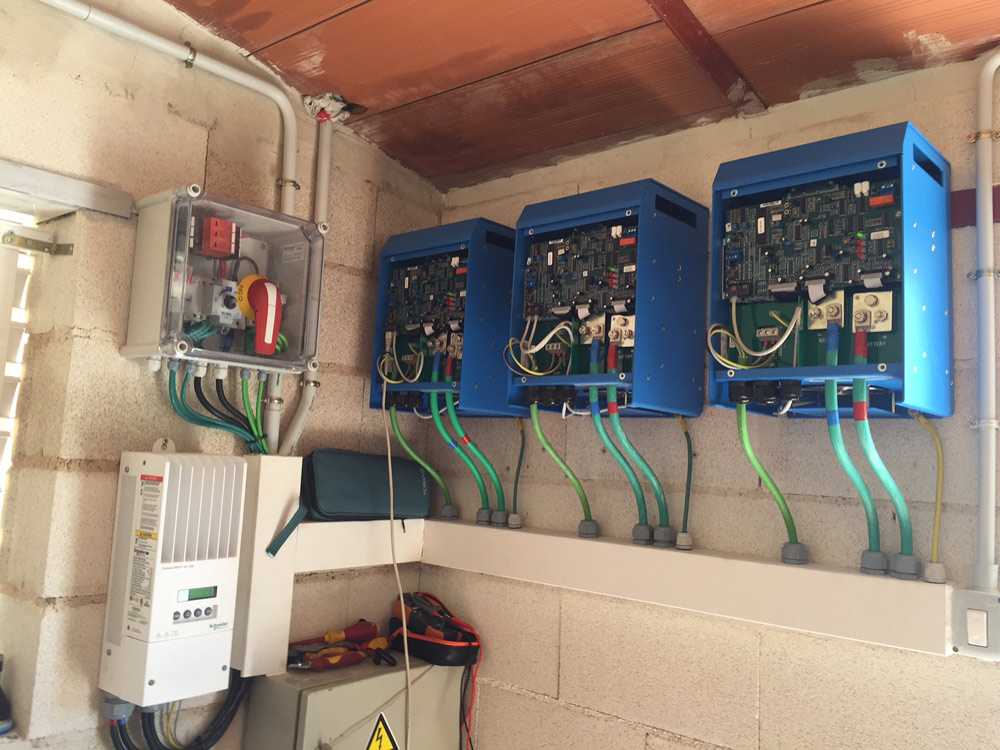STAND-ALONE SYSTEM
Introduction
These systems don’t have access to the public power grid. They are stand alone solar power system so they are able to supply the required electricity output.
They are perfectly indicated for rural areas, and are a low-cost solution to make power available in out-of-reach areas. They are easily installed, simple to manage and require low maintenance.
Depending on their size, they can power a few lights and a TV, a set of house appliances or even a full house. These systems are modular, so several different power sources can be added, such as solar panels, wind generators or even an external generator can be added.
How it works
Stand-alone systems are made of elements that generate, store and output electrical energy.
On these systems the power generating element is the solar panel. It captures solar radiation and transforms it into electric power. On windy areas, a wind generator can be added as well.
In order to control and store energy, solar chargers are used. These bridge the solar panels with the batteries. In this way we manage to correctly charge the batteries.
The batteries are used to store the generated electricity, and to power up the inverter. They are used so that we have a buffer of stored energy that keeps the system up for those times when the sun is not shining.
The inverter transforms energy in the form of continuous current from the batteries into altern current that normal electrical devices such as bulbs, electronic devices and house appliances can use. There are several types that differ in size and suggested uses.
Choosing Your Solar Kit
When sizing your kit you have to take into account several factors such as the amount of power required, intended installation use, and geographical location.
Factors that increase the size of the installation
- The less sunny the area, the more solar panels you will need.
- If you plan to use your installation all year round, or just summer and winter weekends.
- You plan to use several house appliances (high power requirements)
- Planned hours of appliance use. The more hours, the more energy you will need.
Factors that decrease installation size
- Very sunny area
- Planned use only for weekends
- Planned use only for summer
- Will power few appliances (low power requirements)
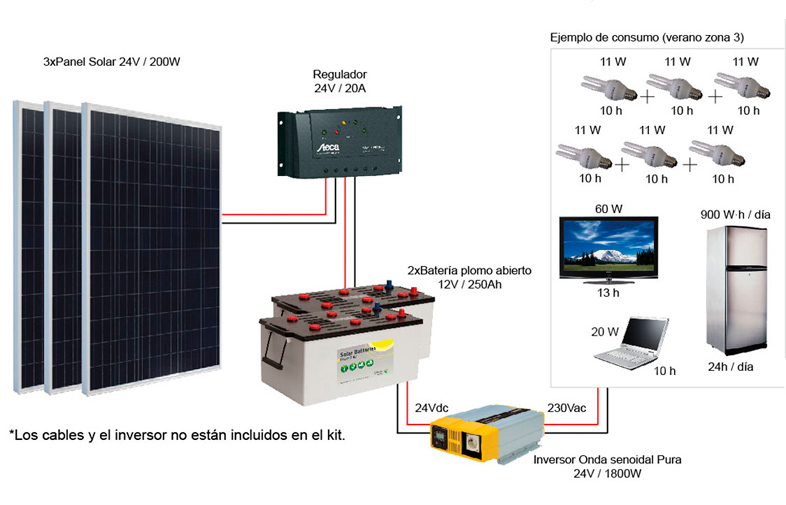
– Schematic example of isolated solar kit –

